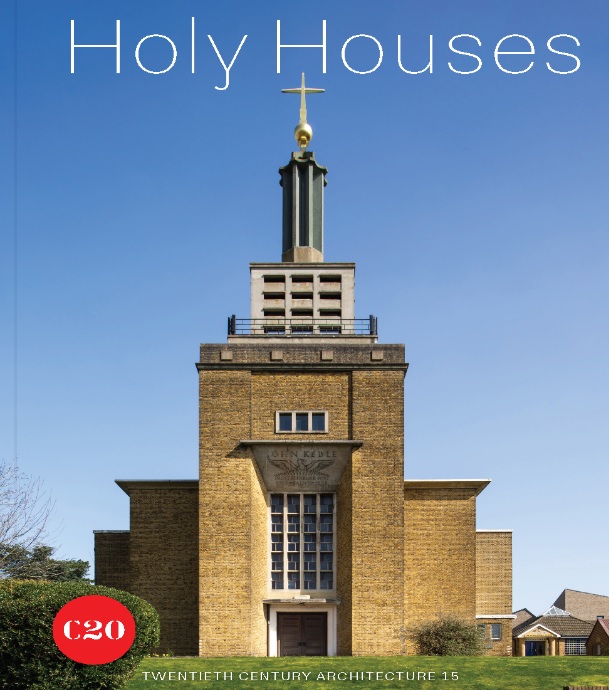Holy Houses: places of worship in twentieth-century Britain
One of the great benefits of membership of the Twentieth Century Society, in addition to its excellent regular magazine C20, is the periodic publication of the splendid and important series of monographs on modern architecture. This is consistently supported in particular by the Mark Fitch Fund and by others including, from time to time, Historic England.
Volume No 15, edited by Elain Harwood and Alan Powers, is entitled Holy Houses: places of worship in twentieth-century Britain. This invaluable collection of essays, well-illustrated with most of the photographs of buildings in colour, should act as a stimulus to motivate readers towards the care and management of these buildings as an integral aspect of our built environment and cultural heritage. Sadly, we recently learned of the death of Elain Harwood, who will be greatly missed.
Within its 192 pages, the society brings together a wide range of ecclesiastical subject matter from twelve contributors. It is enterprisingly broad, ranging from denominations like the Salvation Army (by Stephen Spencer) and Christian Scientists (by Alan Powers), rarely considered as serious architectural clients, to the Quakers (by Johanna Roethe), a denomination more readily associated with the architecture of earlier eras.
The volume also covers several individual architects, some of them well known, like Percy Thomas (by Robert Proctor) and Robert Potter and Richard Hare (by Elain Harwood). Others, like Ernest Bower Norris and Richard Twentyman, receive the wider recognition seemingly only formerly accorded within the limited geographical areas where their work was dominant.
This article originally appeared in the Institute of Historic Building Conservation’s (IHBC’s) Context 176, published in June 2023. It was written by Bob Kindred MBE.
--Institute of Historic Building Conservation
Related articles on Designing Buildings
IHBC NewsBlog
Old Sarum fire in listed (& disputed) WW1 Hangar - Wiltshire Council has sought legal advice after fire engulfed a listed First World War hangar that was embroiled in a lengthy planning dispute.
UK Antarctic Heritage Trust launches ‘Virtual Visit’ website area
The Trust calls on people to 'Immerse yourself in our heritage – Making Antarctica Accessible'
Southend Council pledge to force Kursaal owners to maintain building
The Council has pledged to use ‘every tool in the toolbox’ if urgent repairs are not carried out.
HE’s Research Magazine publishes a major study of the heritage of England’s suburbs
The article traces the long evolution of an internal programme to research 200 years of suburban growth
IHBC Context 183 Wellbeing and Heritage published
The issue explores issues at the intersection of heritage and wellbeing.
SAVE celebrates 50 years of campaigning 1975-2025
SAVE Britain’s Heritage has announced events across the country to celebrate bringing new life to remarkable buildings.
IHBC Annual School 2025 - Shrewsbury 12-14 June
Themed Heritage in Context – Value: Plan: Change, join in-person or online.
200th Anniversary Celebration of the Modern Railway Planned
The Stockton & Darlington Railway opened on September 27, 1825.
Competence Framework Launched for Sustainability in the Built Environment
The Construction Industry Council (CIC) and the Edge have jointly published the framework.
Historic England Launches Wellbeing Strategy for Heritage
Whether through visiting, volunteering, learning or creative practice, engaging with heritage can strengthen confidence, resilience, hope and social connections.
















